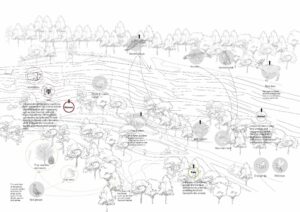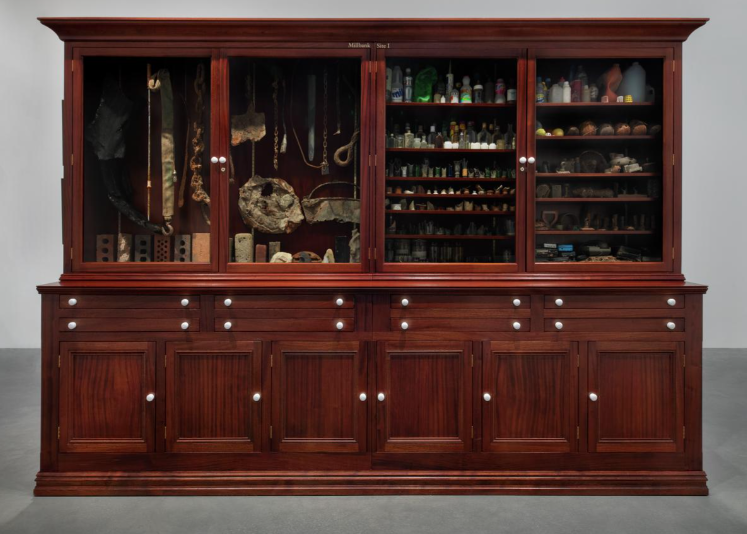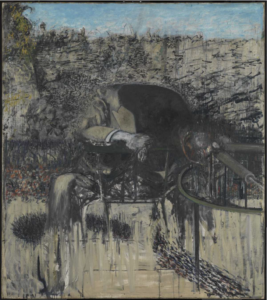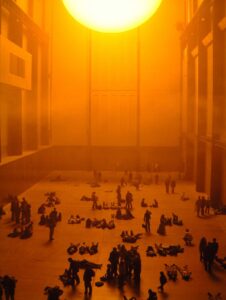Exploration of individual projects
Selection of exhibition venues
I explored my project further this week, and in terms of site, I wanted the exhibition site to echo the abandoned space, with ECA’s redevelopment plan released this year, which includes a complete renovation of the fire station and stables buildings, I thought placing the exhibition space in the context of ECA’s upcoming redevelopment would evoke a dialogue about the past, present and future. This will not only demonstrate the potential for the reuse of abandoned Spaces but also explore themes of change, rebirth, and innovation in this moment of the Academy’s redevelopment. In terms of feasibility, I plan to make creative use of the construction site, such as working with the art school and the construction team to understand the specific conditions of the site and possible safety restrictions. This can help identify specific locations and ways in which artworks can be displayed, or consider using construction enclosures, temporary structures, or Spaces inside the site as exhibition Spaces. This “under construction” state can itself become part of the creation and presentation of art.
Selection of artworks
in terms of artworks, I investigated the research direction of eca graduates in previous years, and I saw Zishen Wang’s project “Cracks in Development”, which created a space for audiences to experience and explore urban cracks by exploring urban cracks. Wang’s work Whispers of Cracks, and I think it’s possible to create a space where the audience can experience and explore the cracks in the city. The installation can be used as an entrance to guide the viewer into the exhibition, or as the central work of the exhibition, inspiring the viewer to shift from negative to positive emotions.

Zishen Wang, 2023, Whispers of Cracks, [photo]
At the same time, I also saw the works of Cheng Xu. Xu’s project takes abandoned landscapes as a lens to demonstrate the revival of ecological and social values of abandoned Spaces through design and artistic intervention. In my opinion, the display of “Leny Quarry | Revival of an Abandoned Landscape” as a case study is also an effective discussion on promoting the ecological and social value revival of abandoned spaces through design and artistic intervention.

Cheng Xu, 2023, Leny Quarry | Revival of an Abandoned Landscape, [photo].
Exploration of cooperation
In addition, I looked at Edinburgh’s Hidden Doors, which aims to reveal hidden parts of the city and showcase emerging artists, musicians, theatre, and filmmakers. From 2014 to the present, they have developed abandoned Spaces in Edinburgh, such as the Market Street Vaults, the Old Leith Theatre, the former National Cinema Building, the abandoned warehouse of the Granton Gas Works, etc., giving these abandoned Spaces new vitality and color as art Spaces. Miss Fogg wrote of Hidden Door: “A revelation… A community art festival brings revolutionary change and vitality to the community that hosts it.” I am considering contacting the organizers of the Hidden Door Festival or directly communicating with the participating artists to explore the possibility of cooperation. This may include borrowing their work or inviting them to create new work for my exhibition.
References:
Hidden Door. (2023), ‘Hidden Door 2023 wins Creative Edinburgh City award’, Available at: https://hiddendoorarts.org/hidden-door-2023-wins-creative-edinburgh-city-award/ [Accessed at: 30 March 2024].
The University of Edinburgh. (2024), ‘Edinburgh College of Art (ECA)’, The University of Edinburgh. Available at: https://www.ed.ac.uk/estates/campus-development/central-campus/current-projects/edinburgh-college-of-art [Accessed at: 30 March 2024].
Wang, Z. (2023), Whispers of Cracks. [Photograph], Available at: https://www.2023.graduateshow.eca.ed.ac.uk/portfolio/zishen-wang [Accessed at: 30 March 2024].
Xu, C. (2023), Leny Quarry | Revival of an abandoned landscape. [Photograph], Available at: https://www.2023.graduateshow.eca.ed.ac.uk/portfolio/cheng-xu [Accessed at: 30 March 2024].







 (photographer: Arsalan Nasir)
(photographer: Arsalan Nasir)